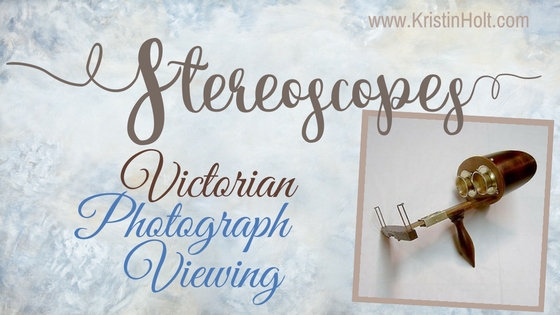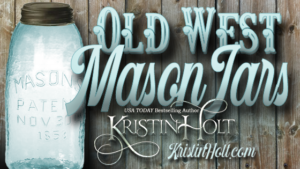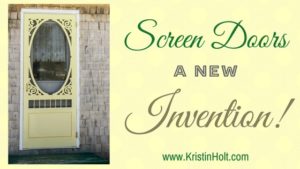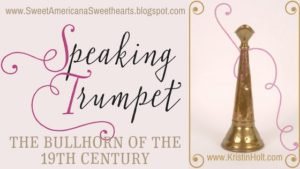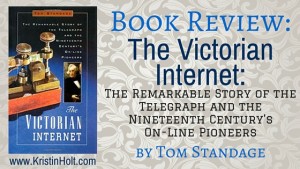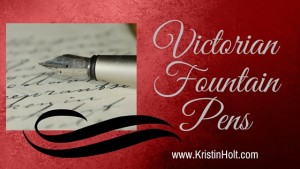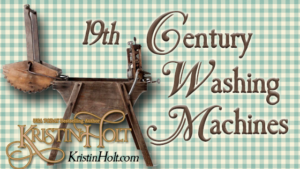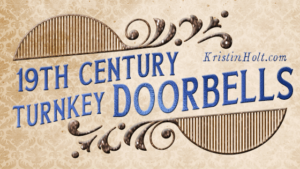Stereoscopes: Victorian Photograph Viewing
Stereoscopes: Victorian Photograph Viewing
.

.
What is a Stereoscope?
.
A stereoscope is a device for viewing a stereoscopic pair of separate images, depicting left-eye and right-eye views of the same scene, as a single three-dimensional image. [source]
.
Stereoscopes and their images appeared prior to the inclusion of pictures or images in newspapers and magazines. Because of the novelty–viewing images of locations or people that would otherwise be forever unknown–the stereoscope was honored as spectacular entertainment. People gathered and passed around the stereoscope, taking turns viewing the stereograph.
.
A stereograph is composed of two pictures mounted next to each other, viewed with a set of lenses known as a stereoscope. Taken around 7cm apart, roughly corresponding to the spacing of the eyes, the left picture represents what the left eye would see, and likewise for the right, so when observing the pictures through a stereoscopic viewer, the pair of photographs converge into a single three-dimensional image. [source]
.
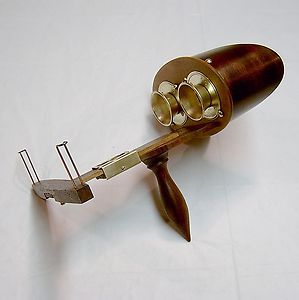
Stereoscope. Image: Courtesy of Pinterest.
.
The earliest type of stereoscope was invented by Sir Charles Wheatstone in 1838. It used a pair of mirrors at 45 degree angles to the user’s eyes, each reflecting a picture located off to the side. It demonstrated the importance of binocular depth perception by showing that when two pictures simulating left-eye and right-eye views of the same object are presented so that each eye sees only the image designed for it, but apparently in the same location, the brain will fuse the two and accept them as a view of one solid three-dimensional object. Wheatstone’s stereoscope was introduced in the year before the first practical photographic process became available, so drawings were used. This type of stereoscope has the advantage that the two pictures can be very large if desired.
.
In 1861 Oliver Wendell Holmes created and deliberately did not patent a handheld, streamlined, much more economical viewer than had been available before. The stereoscope, which dates from the 1850s, consisted of two prismatic lenses and a wooden stand to hold the stereo card. This type of stereoscope remained in production for a century and there are still companies making them in limited production currently. It is primarily American, although it is often named “Mexican stereoscope.”
.
.
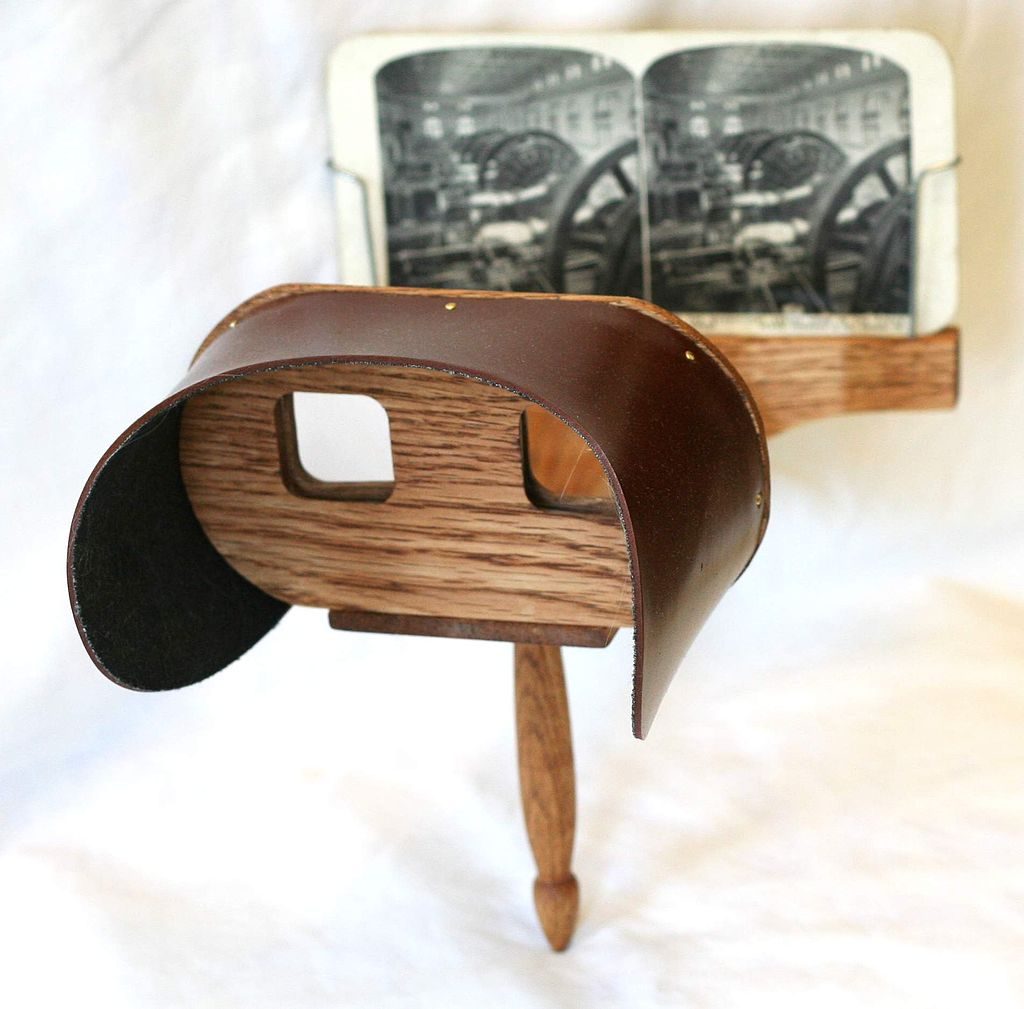
Holmes stereoscope. Image: by Davepape, Public Domain
.
Look familiar?
.
.

.
Stereoscopes: Sears, Roebuck and Co., 1897.
.
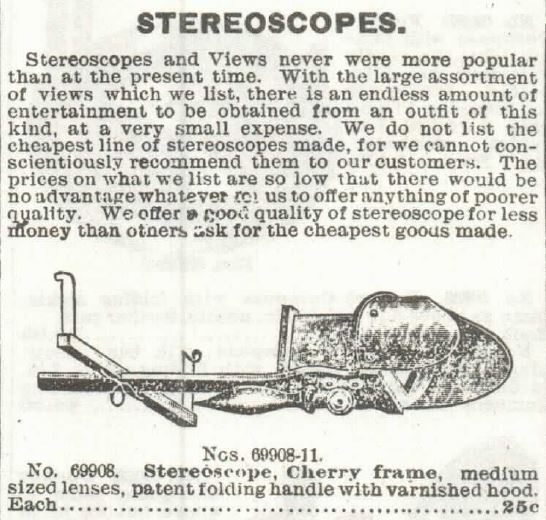
1 of 4): Stereoscopes offered for sale by Sears, Roebuck and Co., 1897.
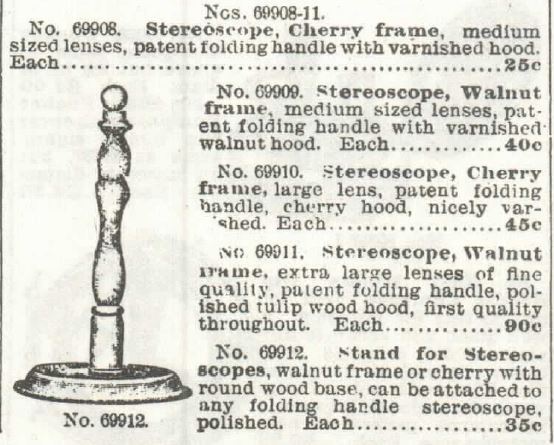
2 of 4): Stereoscopes offered for sale by Sears, Roebuck and Co., 1897.
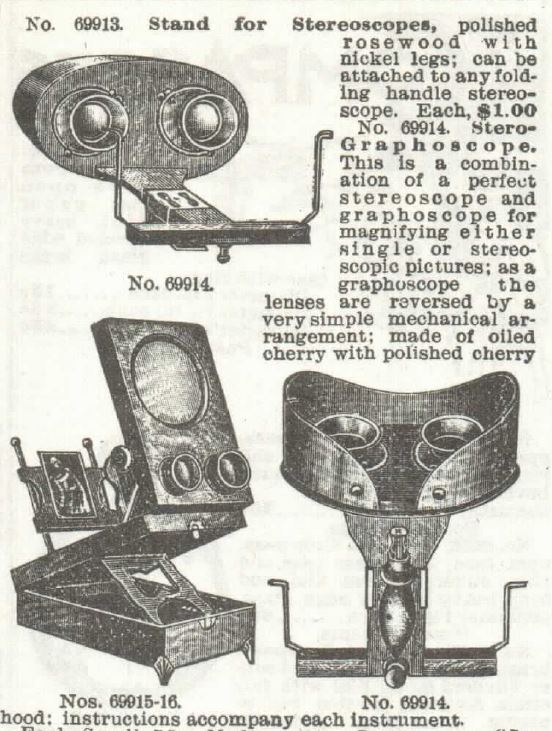
3 of 4): Stereoscopes offered for sale by Sears, Roebuck and Co., 1897.

4 of 4): Stereoscopes offered for sale by Sears, Roebuck and Co., 1897.
.

.
Stereoscopic Views
.
Stereoscopy (also called stereoscopics) is a technique for creating or enhancing the illusion of depth in an image by means of stereopsis for binocular vision. [source]
.
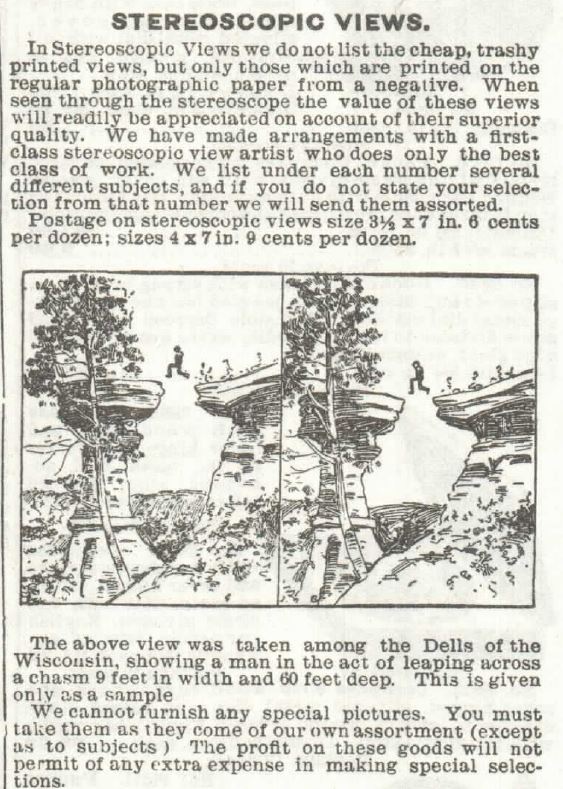
1 of 4): Stereoscopic views for sale by Sears, Roebuck and Co., 1897.
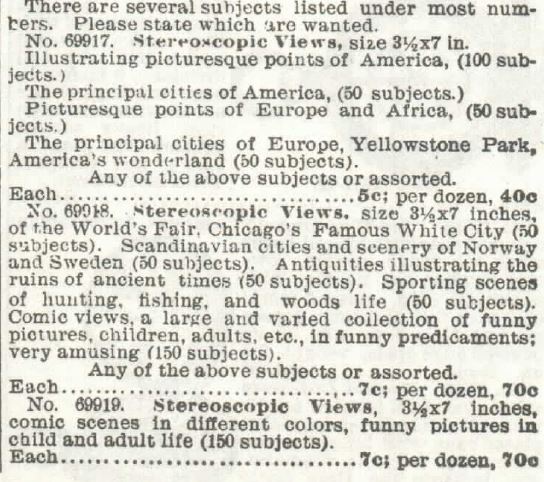
2 of 4): Stereoscopic views for sale by Sears, Roebuck and Co., 1897.
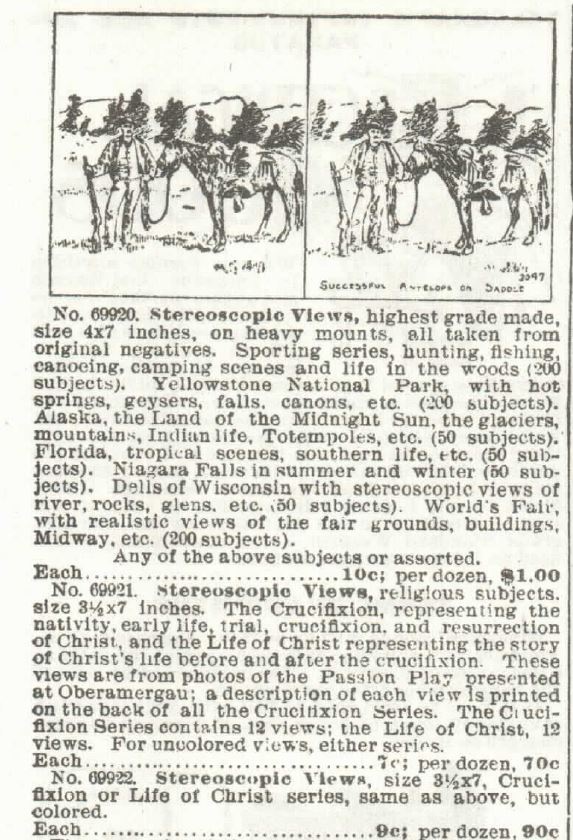
3 of 4): Stereoscopic Views offered for sale by Sears, Roebuck and Co., 1897.
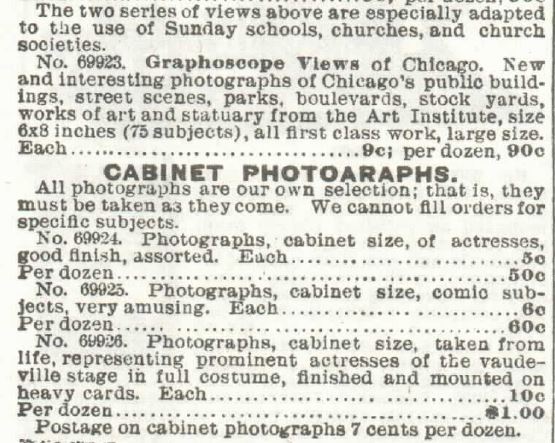
4 of 4): Stereoscopic views for sale by Sears, Roebuck and Co., 1897.
.

.
Stereograph
.
Stereograph
1. A single or double picture for a stereoscope. 1855–1860.
2. Two almost identical pictures, or one special picture, that when viewed through special glasses or a stereoscope form a single three-dimentional image. Also called stereogram. [source]
.
Any stereoscopic image is called a stereogram. Originally, stereogram referred to a pair of stereo images which could be viewed using a stereoscope. [source]
.
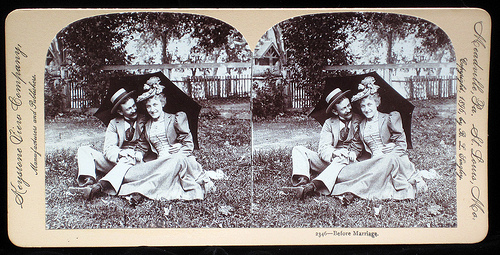
Stereogram, as displayed on East Lake Victorian (Blogspot).
.
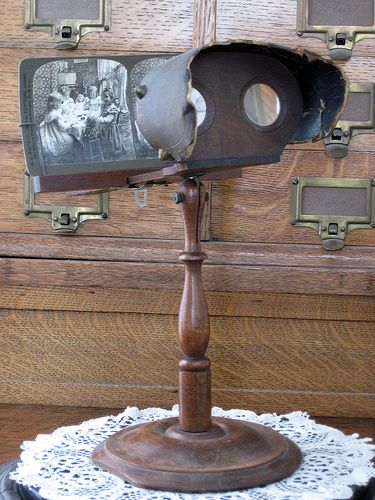
Antique stereoscope, dated to 1850s. Image: courtesy of East Lake Victorian (Blogspot), via Pinterest.
.

.
Stereoscopes: Sears, Roebuck and Co. 1902
.
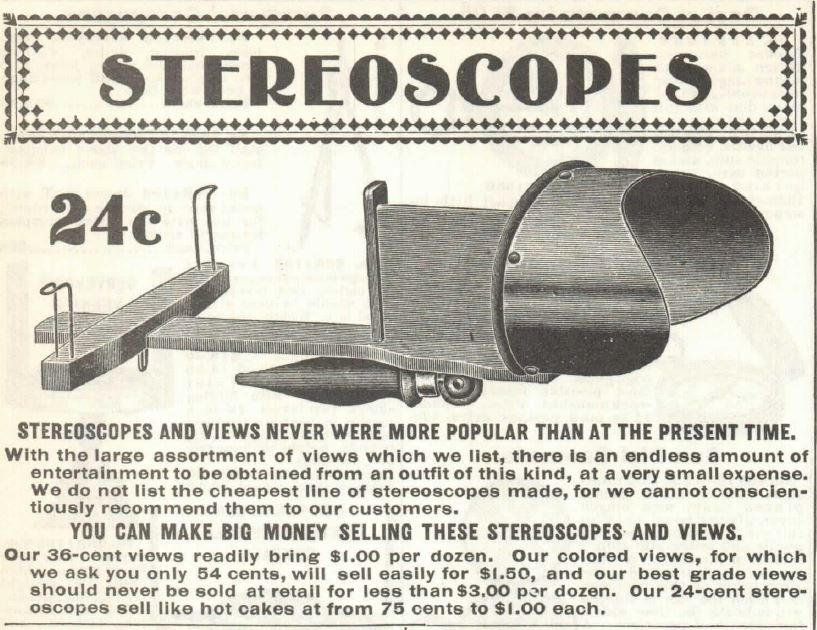
Header: Stereoscopes section. Sears, Roebuck, & Co. 1902
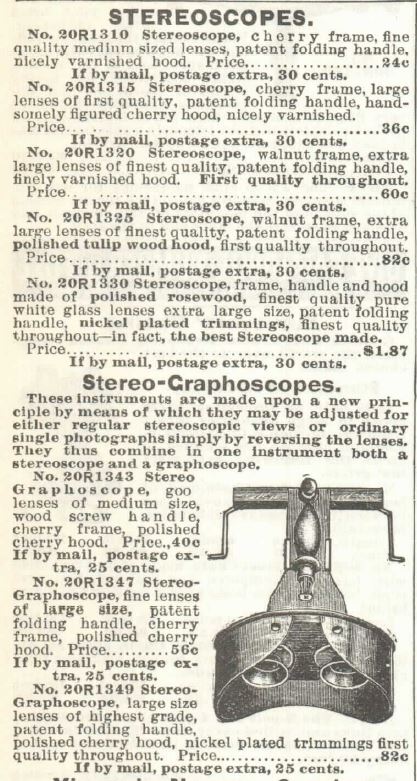
1 of 6): Stereoscopes for sale from Sears, Roebuck, & Co. 1902
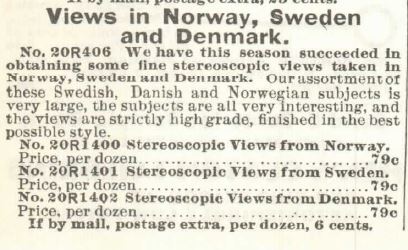
2 of 6): Stereoscopic Views in Norway, Sweden and Denmark for sale from Sears, Roebuck, & Co. 1902
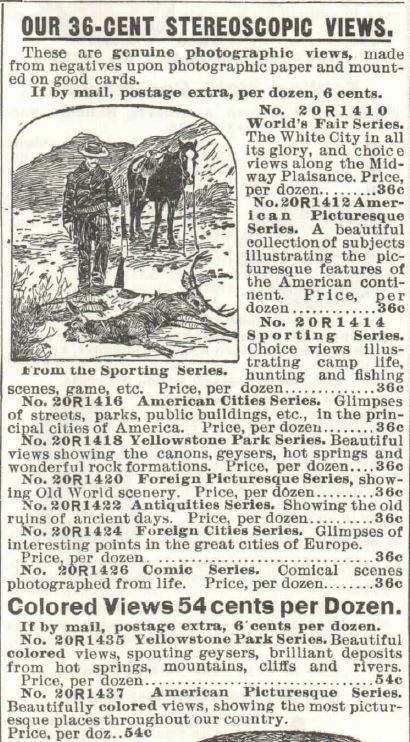
3 of 6): Stereoscopic views for sale from Sears, Roebuck, & Co. 1902. Including: World’s Fair Series, American Cities, Sporting Series, Yellowstone Park Series, etc.
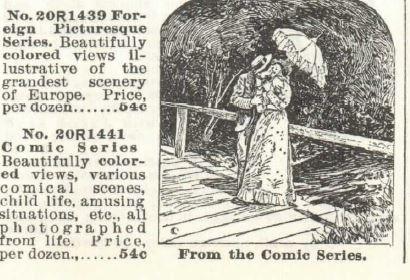
4 of 6): Stereoscopic views (including comic series) for sale from Sears, Roebuck, & Co. 1902
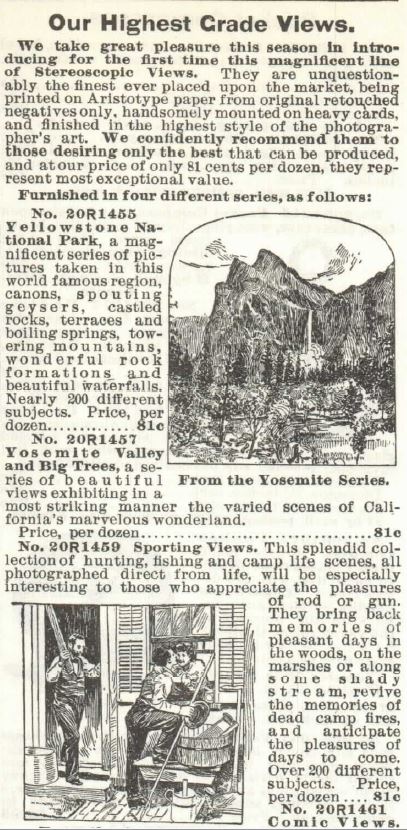
5 of 6): Stereoscopic Views for sale from Sears, Roebuck, & Co. 1902. Includes: Yosemite Park, Yellowstone Park, and Comic Views.
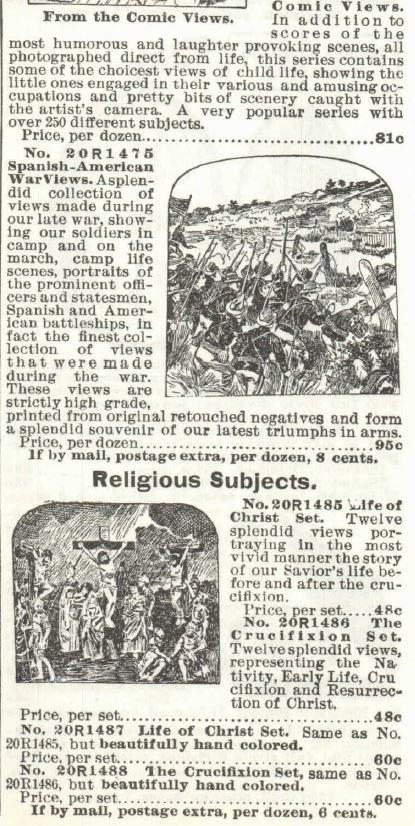
6 of 6): Stereoscopic views for sale from Sears, Roebuck, & Co. 1902. Religious subjects and Spanish-American war.
.

.
.

.
Related Articles
.
.
Other Victorian-era Inventions:
.
.

.
Updated May 2022
Copyright © 2016 Kristin Holt LC
Stereoscopes: Victorian Photograph Viewing Stereoscopes: Victorian Photograph Viewing

